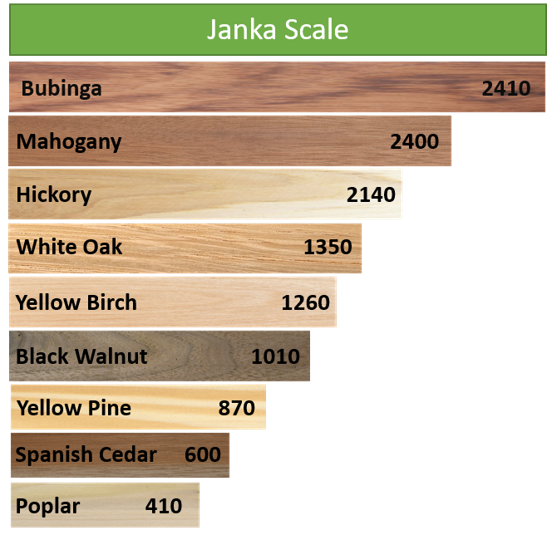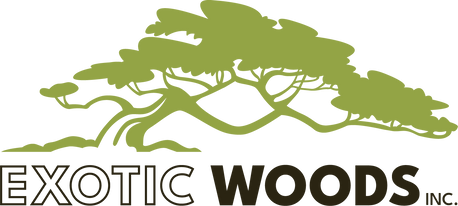Wood Industry Terms
We know. The “language of lumber” can be confusing and sometimes intimidating and you’d like know what you’re talking about. Knowledge is power and to quote an old TV advertisement,” An Educated Consumer is our best customer”. Accordingly, we offer these definitions of some of the terms commonly used in the industry. We hope this clears a few things up for you and please know that we are always happy to explain anything we can along the way.
Board foot: the basic unit of measure for rough sawn lumber. Because rough sawn lumber is sold at random widths, Board Footage (BF) describes the volume of a piece of wood. Any combination of thickness x width x length (link to formula image on Measure Twice) equaling 144 cubic inches is 1 BF. We have gone further into this in a previous post “Measure Twice”.
Square Foot: the surface area of a board or sheet good. 144 square inches = 1 square foot. Calculate by multiplying length X width (in inches) and dividing by 144.
Linear Foot: the measure used primarily for dressed material, LF is strictly a length measurement where widths and thickness are consistent, as in D4S.
D4S: or Dressed 4 Sides…referring to materials machined to specific dimensions of width and thickness. Our D4S stock is ideal for customers who would like to save the time and effort of milling rough material.
Skip Dressed: also called S2S (surfaced 2 sides). Refers to boards that have been lightly machined on both faces. Typically, not a fully dressed face but clean enough to see the grain clearly, and partially flattened.
Rough sawn: as cut from the log. No surface machining done.
4/4, 5/4, 8/4 etc.: fractions used to reflect the thickness of rough sawn material…4/4 = 1”, 5/4 = 1-1/4”, 8/4 = 2” etc.
Dimensional Lumber / Nominal sizes: this refers to material dressed to standard North American sizes …think “2 x 4s” or “1 x 6s” …not the actual finished dimensions, but (originally) machined from planks of those dimensions. For example, 1 x 6 nominal would actually measure ¾” x 5-1/2” and a “2 x 4” is actually 1-1/2” x 3-1/2”.
Shorts: shorter lengths than the typical grades allow for, usually 6 feet or less.
Flat Sawn: or Plain Sawn, is the most common cut of lumber as it is the least expensive way to process a log into boards. Growth rings intersect the face of the board at an angle of 30 degrees or less and show as a “cathedral” pattern on the face of the board.
Quartersawn: growth rings intersect the face of the board at an angle of 60 – 90 degrees. The grain shows straight on the face of the board. Some species (oaks, sycamore, cherry etc.) may show “flecking” – a distinct grain pattern unique to each type of wood.
Rift Sawn: growth rings intersect the face of the board at an angle of 30 – 60 degrees. The grain will show as linear on all 4 surfaces of the board with little or no flecking. The most expensive cutting method as it results in the highest waste factor from the log.
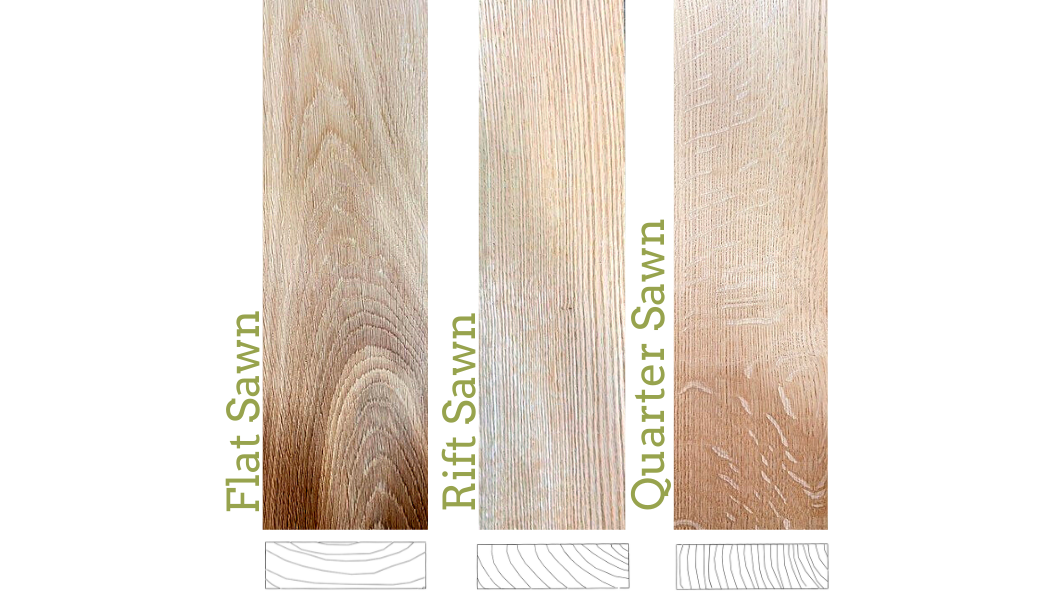
Live edge: or LE, denotes boards (often referred to as “slabs”) that have not been trimmed and have the natural outside edge intact. Boards can have 1 or 2 live edges and the bark may or may not be present. Also known as “Boule Sawn” lumber.
Bias Cut: materials cut on a diagonal across trunks or limbs. This leaves pieces with the live edge all around and an oval shape…we usually refer to these pieces as “cookies”.
Kiln-dried (KD): as opposed to air-dried (AD), Kiln-dried lumber has been forcibly dried (by heat or microwave) to reduce the moisture content to a stable useable level. Air Drying is a slower process whereby the lumber is allowed to dry naturally over time.
Jointing: The first and most important steps in milling. Jointing is the process of making one wide face of the board flat and straight, then making one of the narrow edges flat, straight, and exactly square to the flattened face. The usual tool for this is the jointer.
Planing: the process of removing material to reduce the thickness of a board, leaving clean parallel faces. The usual tool for planing is, you guessed it, a thickness planer.
Rip cut: sawn along the grain/length of a board to reduce the width or make multiple pieces (strips of wood).
Crosscut: sawn across the grain of a board to reduce the length
Resaw: sawn to reduce the thickness of a board or to turn one thick board into multiple thin slices.
Book Match: as a result of resawing, the interior faces of the cut are mirror-imaged one to the other.
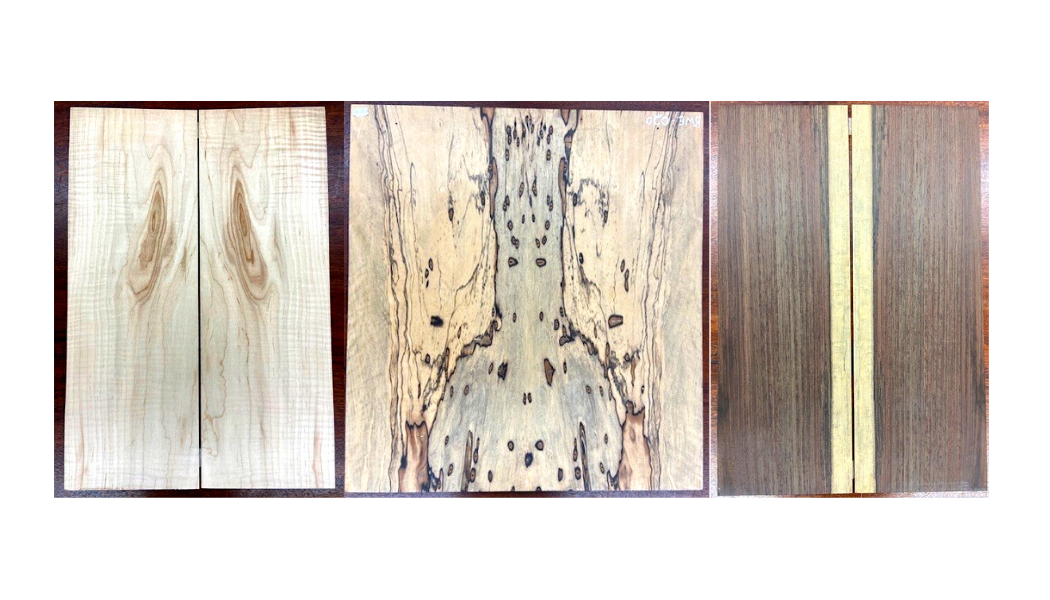
Bevel: an angled cut on the edge of a board.
Dado: a square channel cut into the board surface, running across (perpendicular to) the grain.
Groove: A square channel cut into the board surface, running with (parallel to) the grain.
Rabbet: a square notch cut made on an edge of a board.
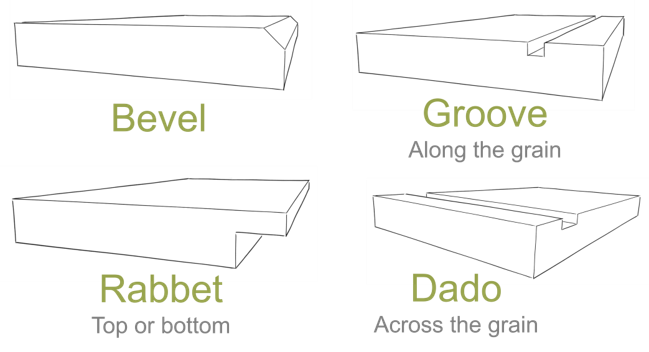
Janka Scale: Janka Scale measurements indicate the surface hardness of different types of lumber. The scale measures the amount of force (represented as pounds per square inch or PSI) required to press a steel ball of 0.444” diameter into the surface of the board to a depth of half the diameter of the ball. Developed primarily for the flooring industry but useful to help understand suitability to purpose. Exotic species tend to be harder than domestic (North American)species.
